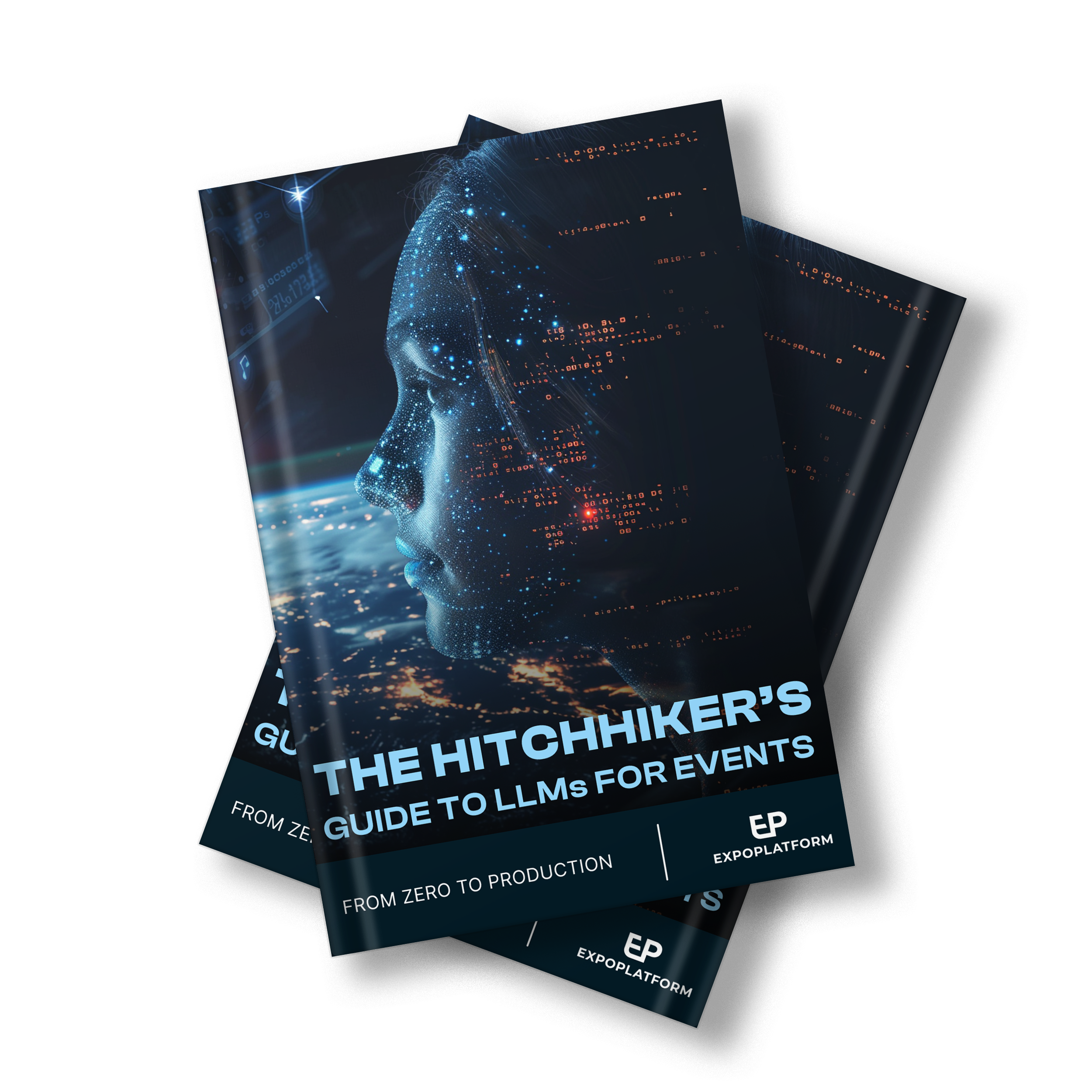
Five ways to drive tradeshow ROI with data analytics
Tradeshows are more digital than ever – with tech layers and advanced algorithms involved at almost every touchpoint.
We are seeing this in pre-event activities to registration, onsite engagement, lead generation, post-event surveys and more.
That’s why it’s critical to exploit the data from these touchpoints and convert them into successful business outcomes.
This article delves into the key ways to unlock the potential of event data to drive tradeshow ROI ⤵️
Also read 👉 The AI Blueprint: How data is going to redefine the events landscape
Scope of event analytics
There are different ways data analytics can be used to improve events. Here’s a lowdown:
➡️ Through strategy: Analytics is often used to crack a tough strategic question at the planning level. For example – better understanding the audience and their objectives, needs and behaviour.
➡️ Through customer journey: Understand the audience on an individual level. As the customer journey progresses – from awareness to advocacy – each interaction can be monitored to create more effective messaging in the next stage.
➡️ Through product development: Spot the trends in the tradeshow to evolve the product offering. Any topic that gains enough traction and interest from the audience can be used to create a more tailored offering.
➡️ Through embedded analytics: Use proprietary insights to improve exhibitor ROI. For example, benchmark the performance of individual exhibitors against various metrics. If the score is below its peers, offer support such as better booth location and sponsorship options to improve in the next edition.
➡️ Through prescriptive analytics: Use analytical insights across the tradeshow to create a richer experience for all participants. For instance, leverage the data collected before, during and after the event to drive the right conversations and connections.
Additional reading ▶️ Five top benefits of event data and analytics
Here are some ways data analytics creates real value for tradeshow ROI:
1. Targeted marketing 🎯
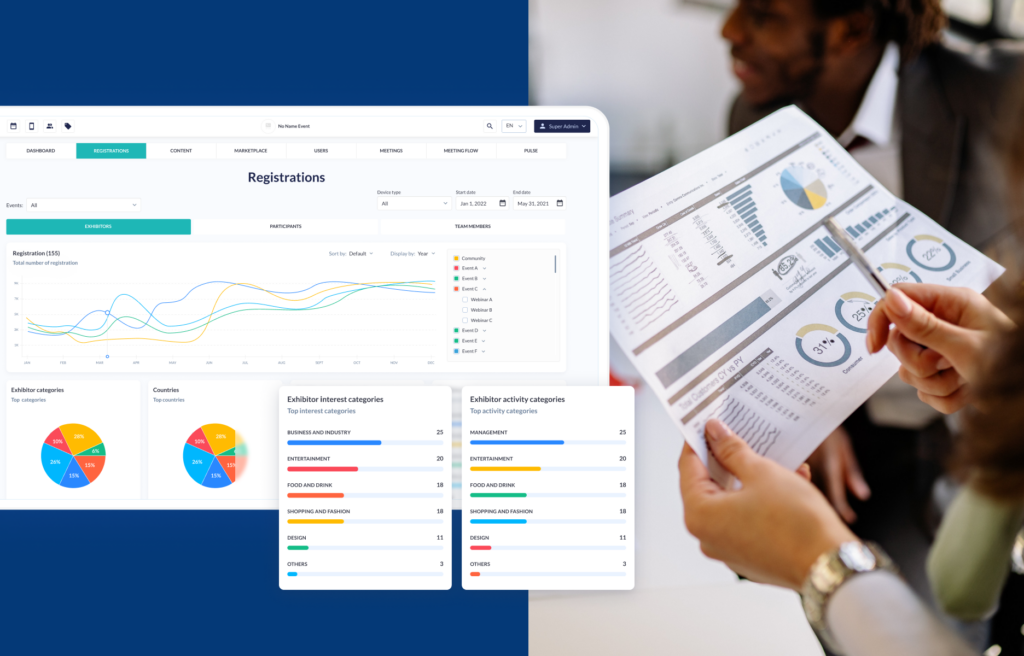
Get key insights into attendee demographics, interests and behaviour using data analytics.
This info helps organisers develop targeted marketing campaigns that resonate with specific attendee segments, leading to higher registration and attendance rates.
You can also measure the effectiveness of marketing campaigns in real-time and make adjustments as needed to improve ROI.
2. Improved attendee engagement 🗣️
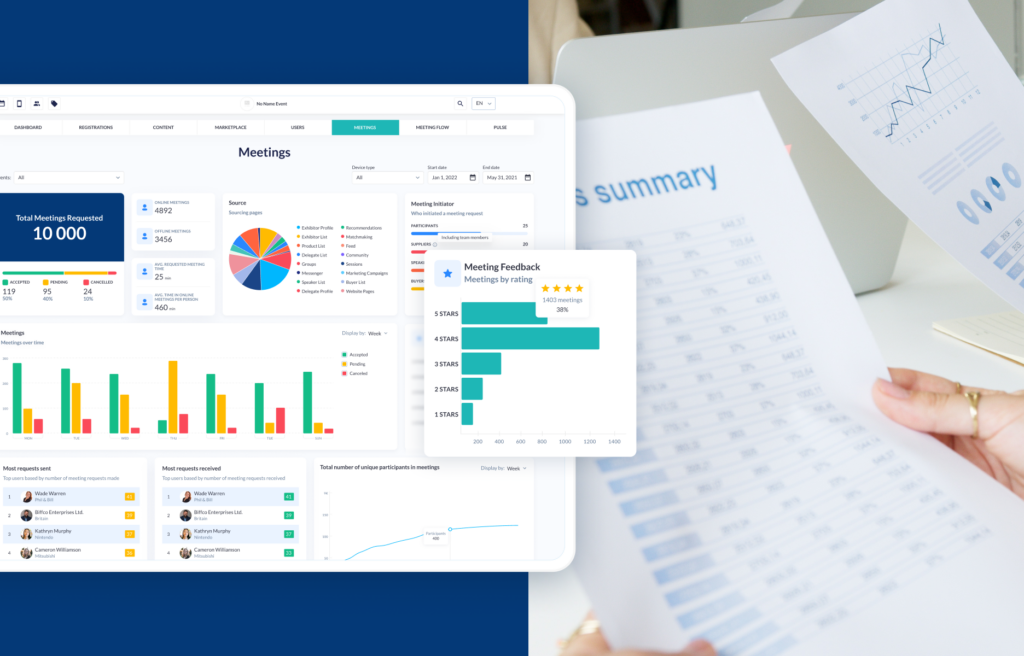
Track, measure and improve attendee engagement at tradeshows with real-time data insights.
Analyse booth traffic patterns and heatmaps to identify which areas of the event are most popular and make adjustments to increase engagement in others.
This leads to higher attendee satisfaction and retention rates, resulting in higher ROI for the show.
3. Optimised exhibit spaces 💺
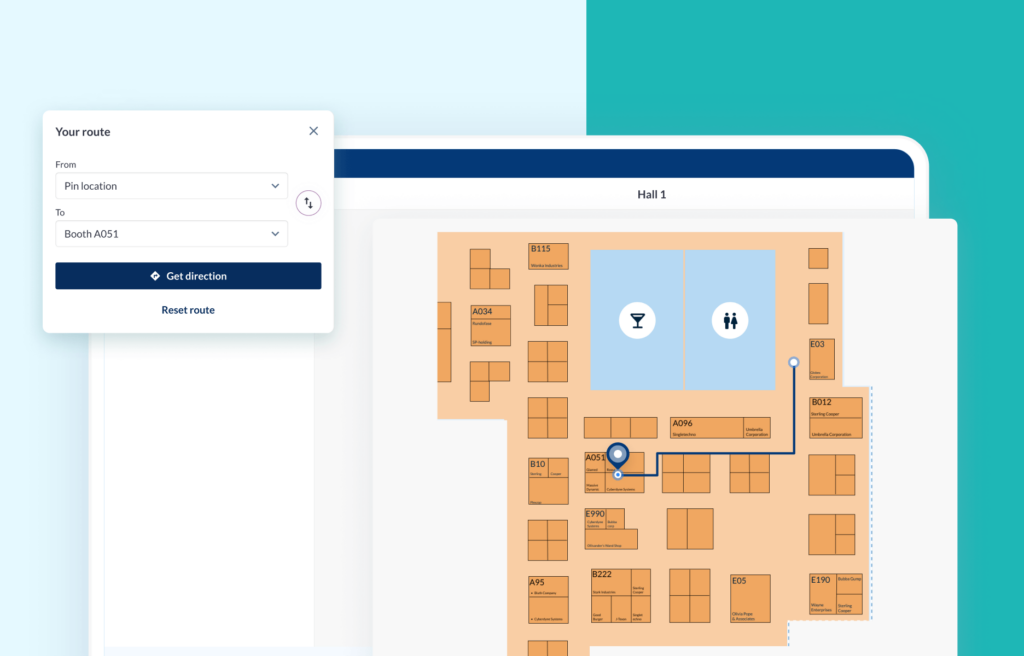
Analysing attendee traffic patterns and behaviours can help identify areas of the exhibit hall that are under-utilised or overcrowded.
You can make adjustments to create a more efficient and effective layout.
This results in higher exhibitor satisfaction rates and more productive interactions between exhibitors and attendees.
4. Improved lead capture and follow-up 📲
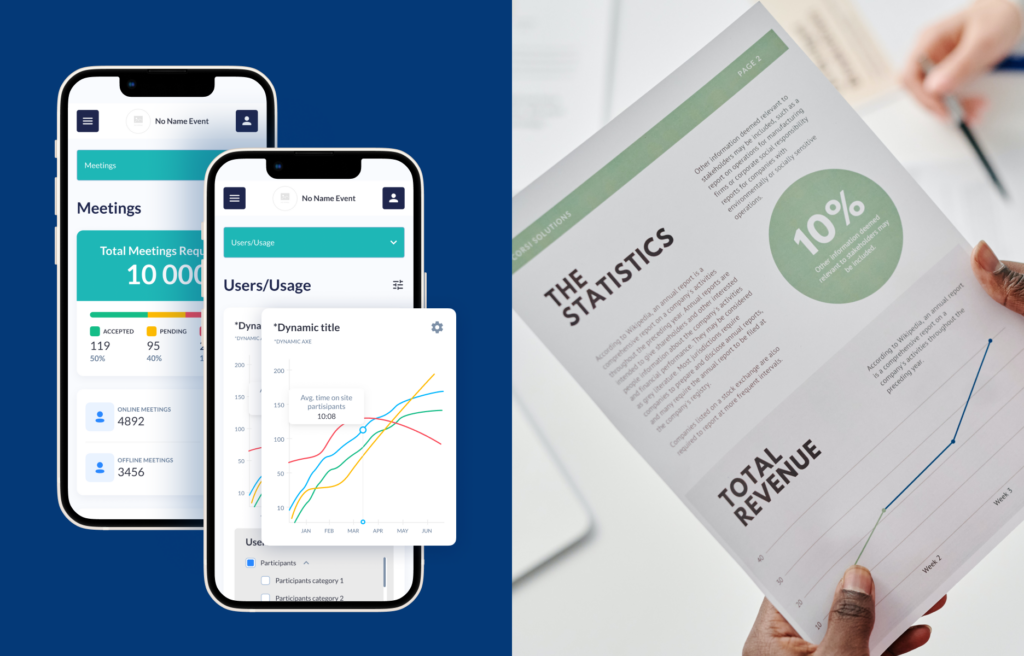
Data analytics can also be used to improve lead capture and follow-up after the event.
By tracking attendee behaviour and engagement, organizers can identify potential leads and provide exhibitors with more targeted and qualified leads.
Additionally, organisers can use data analytics to track exhibitor follow-up efforts after the event, which can help improve conversion rates and overall ROI.
5. Post-event evaluation and planning 📊

Data analytics can be used to evaluate the success of the trade show and plan for future events.
Organisers and exhibitors can use the analytics dashboard to assess which parts of the event were successful and where improvements could be made.
This help organisers make strategic decisions about future events and work toward higher attendance rates and exhibitor satisfaction rates.
Conclusion
Data analytics is a critical tool to measure the success of tradeshows – it helps you put actual numbers to what worked and what didn’t.
You can track which areas of your show were a runaway success and what are the gaps you need to fill – from the before it even starts until its final conclusion
This allows you to make data-driven decisions to improve your future offerings – optimising booth design, tailoring content to attendees and getting the necessary feedback to ensure the exhibitor’s investment pays off in the long run.
🦅 Get a bird’s eye view of your event and communities with ExpoPlatform’s data analytics tools. Find out more here.
We hope you enjoyed reading this article and found it useful. At ExpoPlatform, we want to help you build better events and communities. Please get in touch and ask for a demo here. Thank you.
There's more you might like

Eventprofs can’t “get away with what feels good” when measuring success
Eventprofs can no longer “get away with what feels good” when trying to measure the success of their live shows, according to an expert panel. The top team of contributors – including Paul Miller from Questex, Duncan Reid of Reset Connect and Explori’s Chloe Richardson – took on topics such as how to measure the ...

Event data overload ‘needs philosophers over scientists’
Eventprofs are faced with an overload of information which needs “more philosophers than data scientists”, according to an industry expert. Enrico Gallorini, co-founder of GRS Research & Strategy, believes organizers need to go back to basics with the questions they ask their audience, in order to really understand their needs. It comes after his company ...
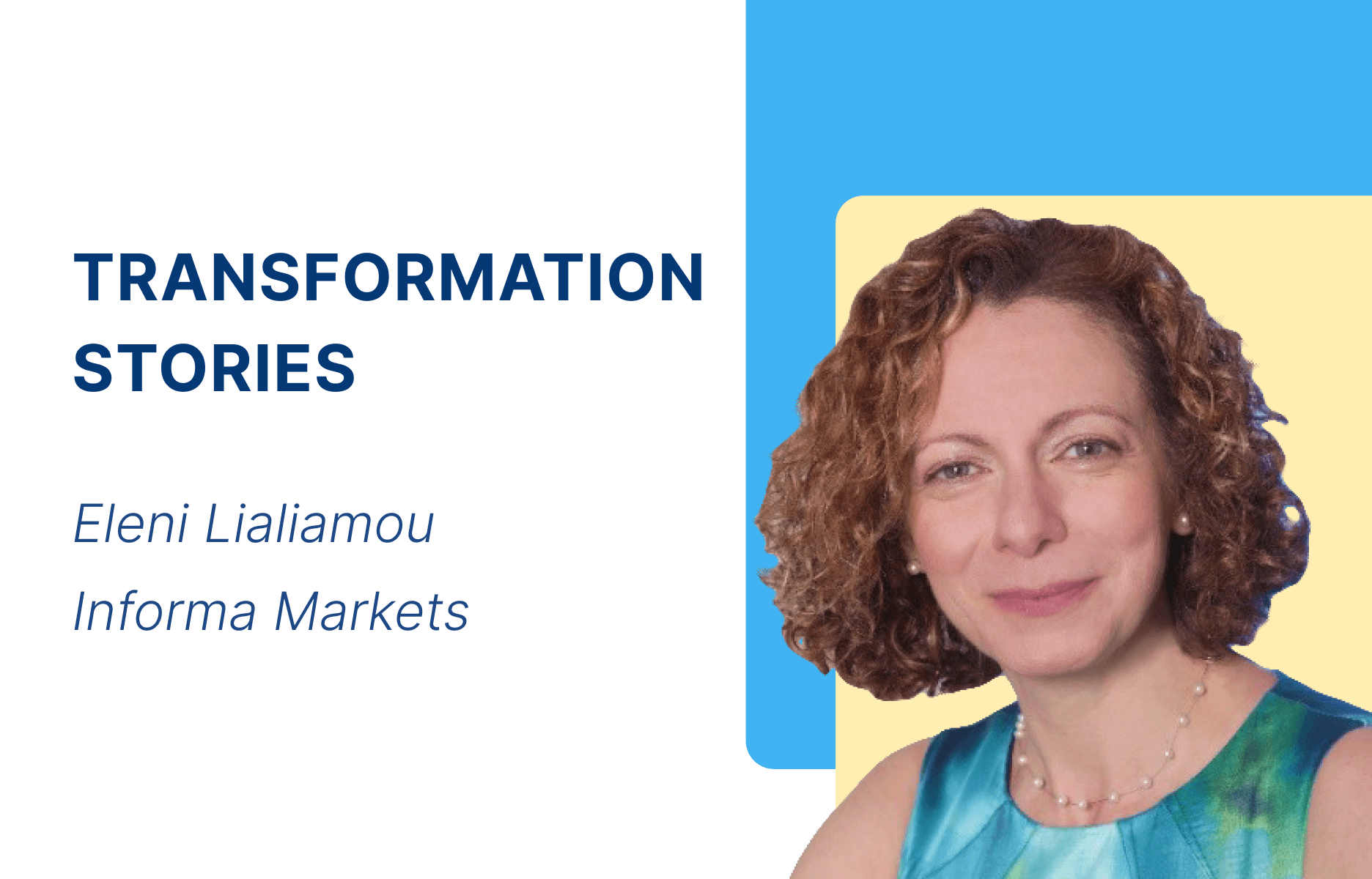
The ‘million dollar question’ about event data algorithms
The “million dollar question” facing organizers right now is over how event data can create high-quality recommendations, according to an industry expert. Eleni Lialiamou, executive vice president of product management at Informa Markets, believes the way we live our lives has been transformed through technology – and exhibitions deserve the same. But how close we ...

